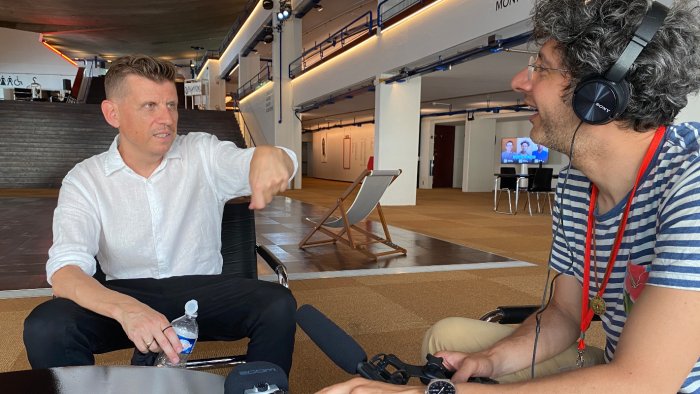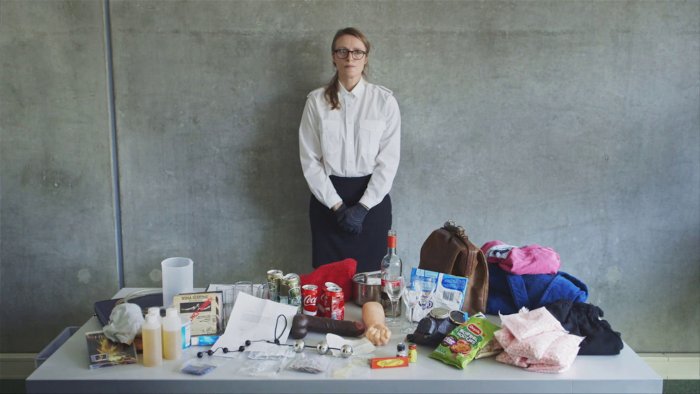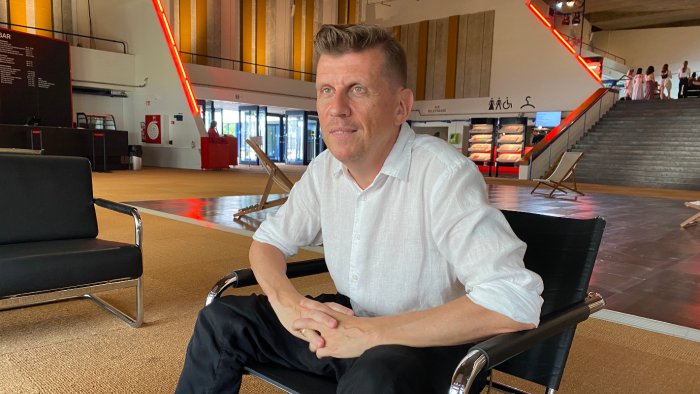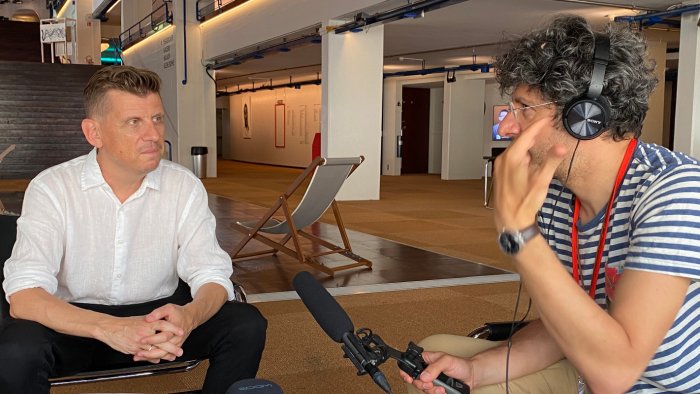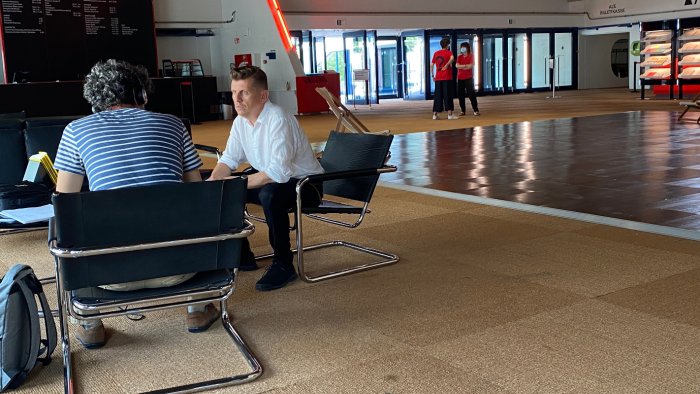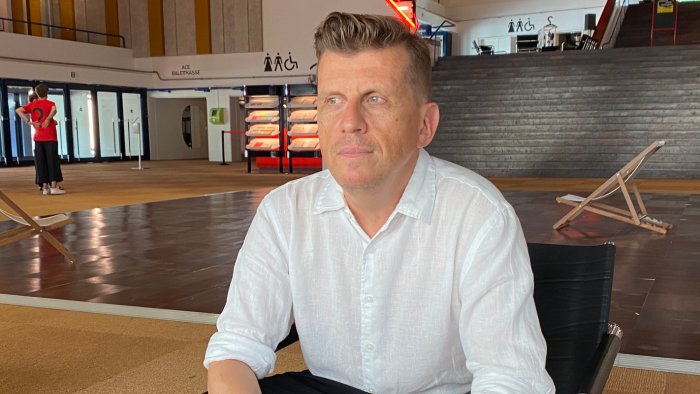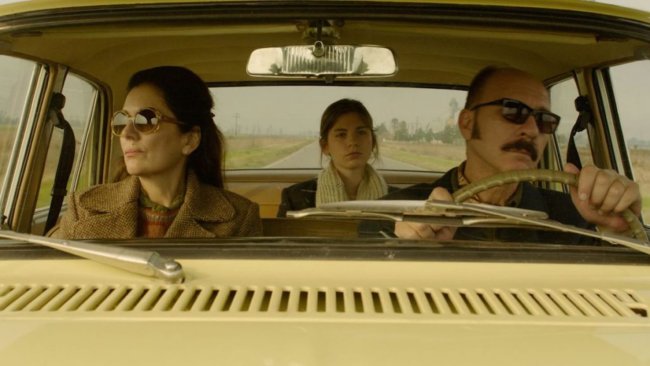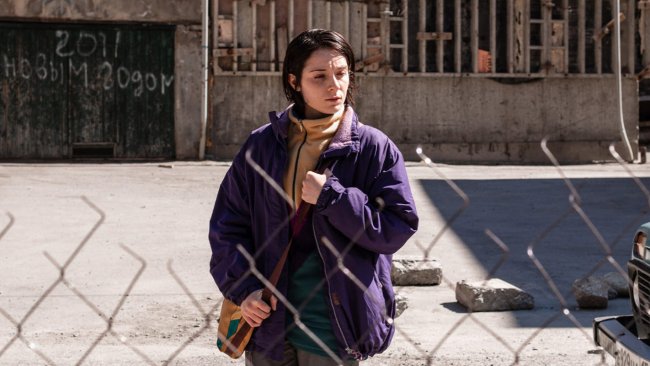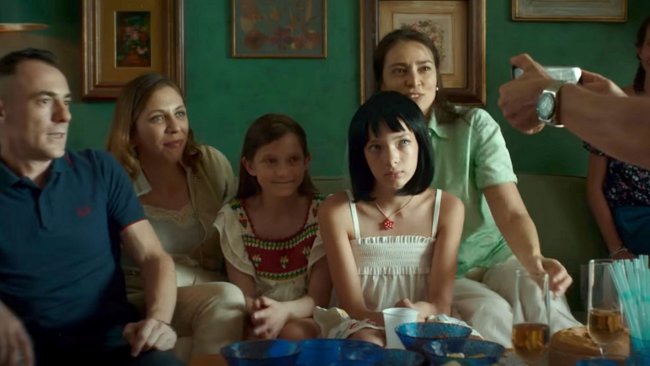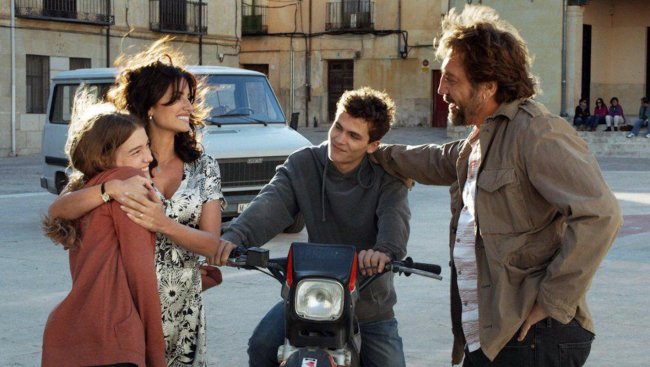Feast | Tim Leyendekker
[…] Was this fact a crime? Tim Leyendekker’s work gives impressive substance to this special question mark, and in this way causes us to wander from the initial horror we eventually feel facing a deliberate and potentially lethal act to a more nuanced and complex perspective on the case.
[…] Be love aspiring or fusional, or both aspiring and fusional, the ideal of communion will always contain a criminal virus that tends to erase the individuality of the Other. What are we ready to sacrifice in the name of love?
Text: Giuseppe Di Salvatore | Audio/Video: Ruth Baettig
Podcast
Talk at the Bildrausch Filmfest Basel
Talk with Tim Leyendekker about «Feast» at Bildrausch Filmfest Basel.
Find a list of all our Podcasts here.
A series of objects are showcased clinically at the beginning of Feast. They are displayed and named and photographed, thereby constituting the first long sequence of the film, during which we have time to see them as, quite literally, pieces of evidence. The fact around which the film is built is a juridical fact, relating to the well-known Groningen HIV case in 2007, when several people were intentionally infected with HIV positive blood. Was this fact a crime? Tim Leyendekker’s work gives impressive substance to this special question mark, and in this way causes us to wander from the initial horror we eventually feel facing a deliberate and potentially lethal act to a more nuanced and complex perspective on the case. The documentary flair of the factual inquiry is blurred through the formally sophisticated construction of seven episodes that play explicitly with several cinematic genres. The crime will pertain to the fictional territory of cinema, through which we will discover how evidence of a fact does not easily imply an evident judgement of the fact itself. Cinema forces us to suspend our judgement on reality; Feast invites us to interrogate ourselves about a particular fact through the lens of a multitude of perspectives.
The second episode reveals an almost opposite perspective to the previous judicial one, which somehow presupposes a crime. Here we sink into the philosophical arguments of Plato’s Symposium, which presupposes nothing but the experience of love (eros), and tries to weigh up its nature and effects. The open structure of Socratic dialogues so mark Leyendekker’s gesture of exploring, through this renowned case, the most non-obvious aspects of love – both in terms of desire but also of communion. Be love aspiring or fusional, or both aspiring and fusional, the ideal of communion will always contain a criminal virus that tends to erase the individuality of the Other. What are we ready to sacrifice in the name of love? This second episode, an aesthetically well composed tour-de-force of verbal arguments, plays a pivotal role in Feast, because it strongly pushes forward empathy as both object and modality of the film. The film highlights the problems of empathy, and at the same time challenges our own empathy towards persons that would be easy to stigmatise as criminal or evil.
Feast is not conceived as a rehabilitation of these persons however, insofar as it does not try to eliminate the evil that we could project upon them, but tries to make us understand the human aspect of an evil that is only a part of a more complex picture of love and disease. A complex picture that will also have an informative side about the HIV disease: in 2007 the evolution of HIV therapies has rendered infection with the virus not necessarily lethal, but still life changing – and potentially discriminating – for the lives of those who test positive. This fact means that even today people with HIV, at least in Western countries, could be seen as belonging to an exclusive and uncomfortable “club”. In this respect, the film is able to highlight the seclusive and/or elitist aspect of the HIV “community” (and communities in general…), in this manner precisely stressing how this aspect cannot be disentangled from the ideal of love communion. Through the informative path, we can experience new social and existential dimensions of love and disease, such as the festive celebration of both together. Emil Cioran used to say that the ill person would more easily like the other persons to be ill like they are than for they themselves to be healed – and this could also not necessarily be a cynical truth but a loving celebration…
As evident in the episode where the microbiologist explains the “behaviour” of viruses, Tim Leyendekker’s film prefers to challenge the truth and multiply the perspectives on it. The prismatic virtue of the film is apparent in the architecture of said film, where different formal elements are at stake for each of the several episodes, but it also emerges in the dramaturgic evolution of the interview at the core of the film. We face a masked witness of the “crime”, who has just served his time in prison and declares that he does not like to have his face filmed. In spite of that, after several minutes respecting his will, the filmmaker progressively unmasks his face “for us”. Is he breaking the deontological rule of the documentarist? Are we experiencing what breaking a rule means? Or are we simply discovering that the documentary perspective has been merely the result of a fictional affectation? Are we realising that we cannot but access the truth through the mediation of an actor (acting or re-enactment?) and through the construction of film? It is precisely this ambivalence that Leyendekker is interested in, and that exemplifies the “communion” of form – ambivalence between fiction and documentary and content, ambivalence between moral reprobation and human understanding and reception, ambivalence between our own rejection and empathy towards the person/character… Is this a criminal communion in the name of ambivalence? And what if this ambivalence would express nothing but the reality itself?
This article contains a third-party video. If you would like to watch the video, please adjust your settings.
Info
Feast | Film | Tim Leyendekker | NL 2021 | 84’ | Bildrausch Filmfest Basel 2021
First published: July 12, 2021
